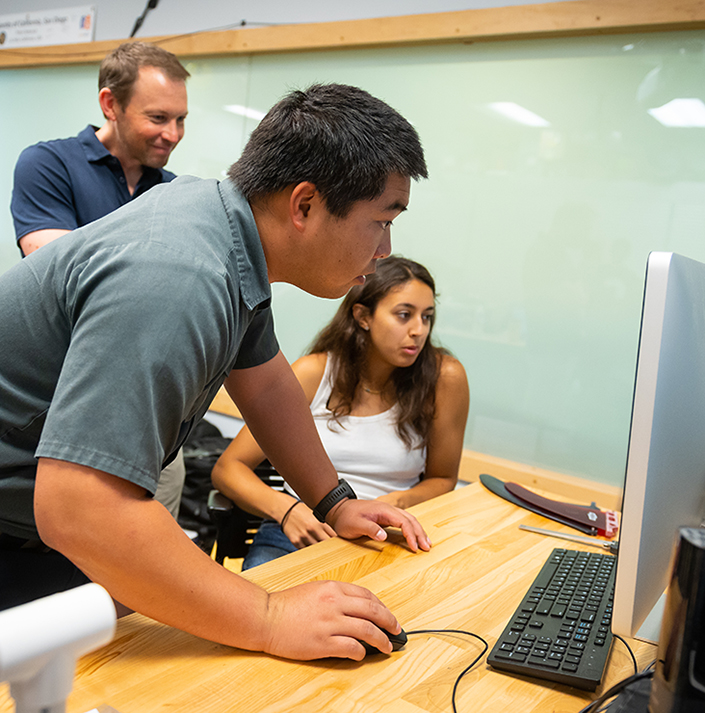
“One aspect of project leadership is figuring out how to best use each student’s skills,” says Engineer Nathan Hui. (Photo by Alex Matthews)
Nathan Hui’s trajectory, for one, has been shaped by E4E for almost a decade. As a UC San Diego electrical engineering undergraduate, he found E4E more relevant to real problems than the autonomous airplane competitions he had tried. After working on aerial monitoring with cameras mounted on helium balloons for the San Dieguito River Valley Conservancy, he hit his stride when he joined the Radio Collar Tracking project, throwing himself into signal processing and drone integration, including fieldwork.
“[In a trip to the Dominican Republic]we actually flew the drone around tracking baby iguanas as they were leaving their nests and dispersing,” he said. “I did two trips to the Dominican Republic that year. And throughout that time, we were constantly trying to test and improve the drone while we were stateside. The thing about fieldwork is we could see the actual struggles we were faced with, how the system does and doesn’t work in those real-world conditions.”
On top of the valuable technical skills, Hui’s appointment as student project lead generated growth on the management and mentorship side.
“One aspect of project leadership is figuring out how to best use each student’s skills,” he said. “In E4E, we don’t focus on a single engineering discipline. It’s very interdisciplinary and focused on systems building and systems engineering, so students have to adapt. It can be challenging when they’re struggling, and we need to figure out what can we do to efficiently get them up to speed. And it’s great to see when students absolutely thrive.”
Hui went on to earn a master’s degree in electrical engineering at UC San Diego based on his E4E work and landed a job in Teledyne RD Instruments in Poway, where he worked for several years.
Supporting Each Other
Hui continued to help out the E4E program, though, and when an opportunity arose to return to UC San Diego as an engineer—half time with E4E and half time with the Cultural Heritage Engineering Initiative at QI—Hui jumped at the chance.
Now, as an E4E staff member, Hui works with Kastner and Schurgers to support the program, its students and its scientific collaborators. He is full of ideas about new ways the team might be able to iterate its own processes, such as new ways to approach data management and documentation. He’s also again immersed in student mentorship, figuring out how each student can get the most out of what E4E has to offer.
